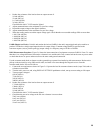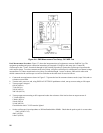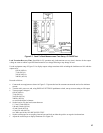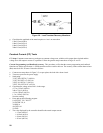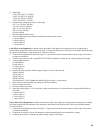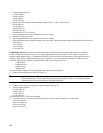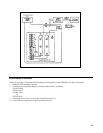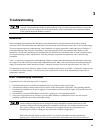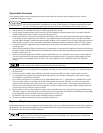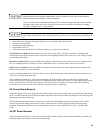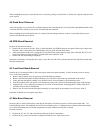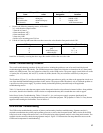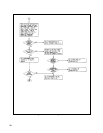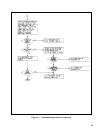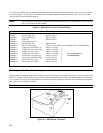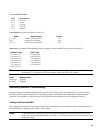
34
Electrostatic Protection
The following caution outlines important precautions which should be observed when working with static sensitive
components in the power supply.
This instrument uses components which can be damaged by static charge. Most semiconductors can
suffer serious performance degradation as a result of static charges, even though complete failure may
not occur. The following precautions should be observed when handling static-sensitive devices.
a. Always turn power off before removing or installing printed-circuit boards.
b. Always stored or transport static-sensitive devices (all semiconductors and thin-film devices) in conductive material.
Attach warning labels to the container or bag enclosing the device.
c. Handle static-sensitive devices only at static-free work stations. These work stations should include special conductive
work surfaces (such as Agilent Part No. 9300-0797) grounded through a one-megohm resistor. Note that metal table
tops and highly conductive carbon-impregnated plastic surfaces are too conductive; they can act as large capacitors and
shunt charges too quickly. The work surfaces should have distributed resistance of between 10
6
and 10
l2
Ω per square.
d. Ground all conductive equipment or devices that may come in contact with static-sensitive devices or subassemblies
containing same.
e. Where direct grounding of objects in the work area is impractical, a static neutralizer should be used (ionized air blower
directed at work). Note that this method is considerably less effective than direct grounding and provides less protection
for static-sensitive devices.
f. While working with equipment on which no point exceeds 500 volts, use a conductive wrist strap in contact with skin.
The wrist strap should be connected to ground through a one-megohm resistor. A wrist strap with insulated cord and
built-in resistor is recommended, such as 3M Co. No. 1066 (Agilent Part No. 9300-0969 (small) and 9300-0970
[large]).
Do not wear a conductive wrist strap when working with potentials in excess of 500 volts; the one-megohm
resistor will provide insufficient current limiting for personal safety.
g. All grounding (device being repaired, test equipment, soldering iron, work surface, wrist strap, etc.) should be done to
the same point.
h. Do not wear nylon clothing. Keep clothing of any kind from coming within 12 inches of static-sensitive devices.
i. Low-impedance test equipment (signal generators, logic pulsers, etc.) should be connected to static-sensitive inputs
only while the components are powered.
j. Use a mildly activated rosin core solder (such as Alpha Metal Reliacor No. 1, Agilent Part No. 8090-0098) for repair.
The flux residue of this type of solder can be left on the printed circuit board. Generally, it is safer not to clean the
printed-circuit board after repair. Do not use Freon or other types of spray cleaners. If necessary, the printed-circuit
board can be brushed using a natural-bristle brush only. Do not use nylon-bristle or other synthetic-bristle brushes. Do
not use high-velocity air blowers (unless ionized).
k. Keep the work area free of non-conductive objects such as Styrofoam-type cups, polystyrene foam, polyethylene bags,
and plastic wrappers. Non-conductive devices that are necessary in the area can be kept from building up a static charge
by spraying them with an anti-static chemical (Agilent Part No. 8500-3397).
l. Do not allow long hair to come in contact with static-sensitive assemblies.
m. Do not exceed the maximum rated voltages specified for the device.
Repair and Replacement
Repair and replacement of most components in the power supply require only standard techniques that should be apparent to
the technician. The following paragraphs provide instructions for removing certain assemblies and components for which
the procedure may not be obvious upon inspection.
To avoid the possibility of personal injury, remove the power supply from operation before opening the
cabinet. Turn off ac power and disconnect the line cord, GPIB plug, load, and remote sense leads before
attempting any repair or replacement.



